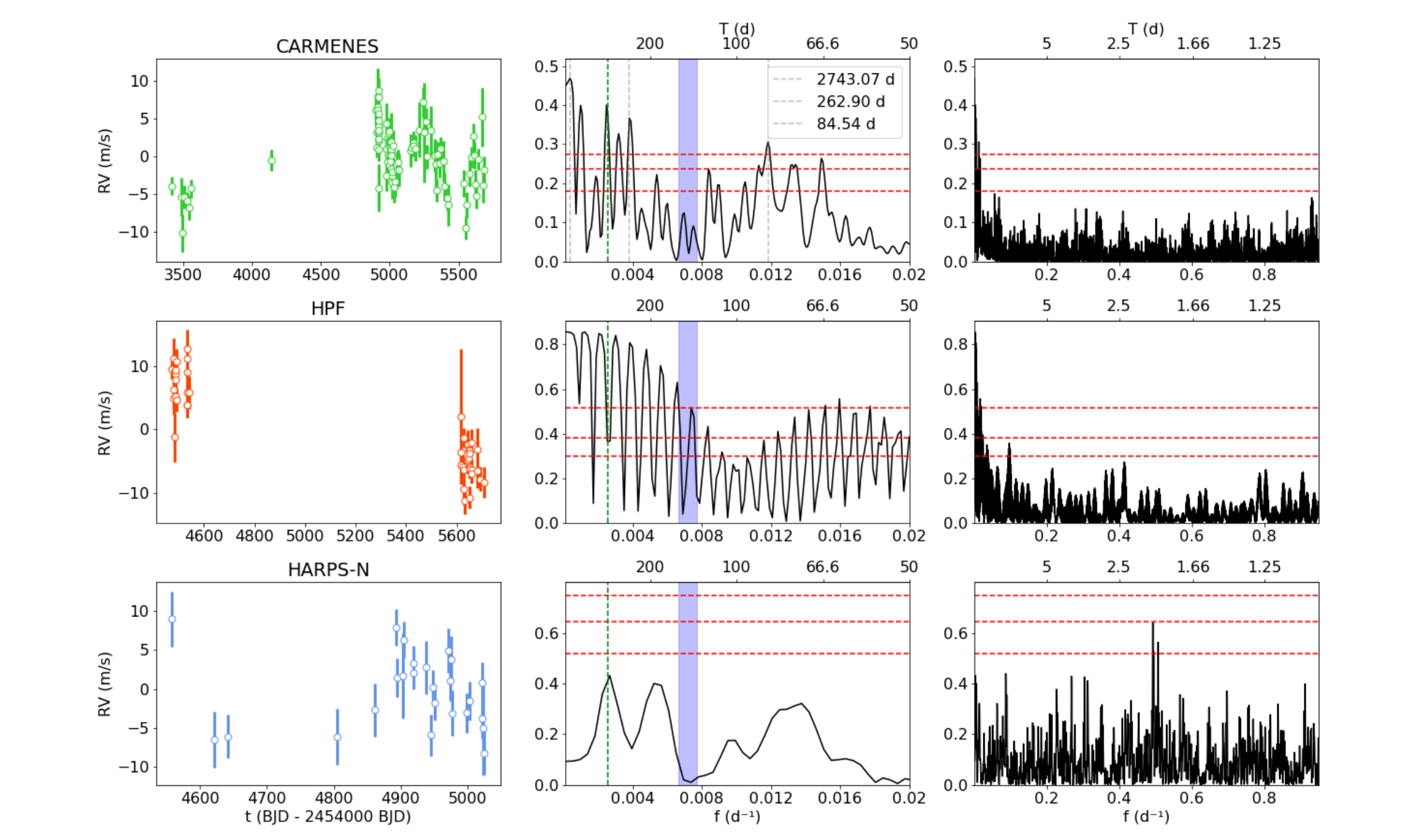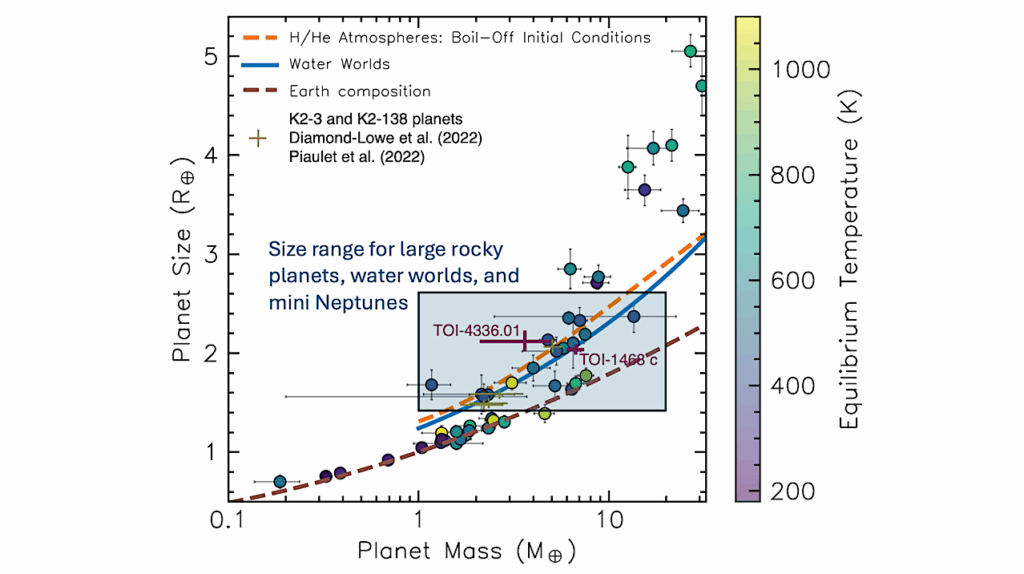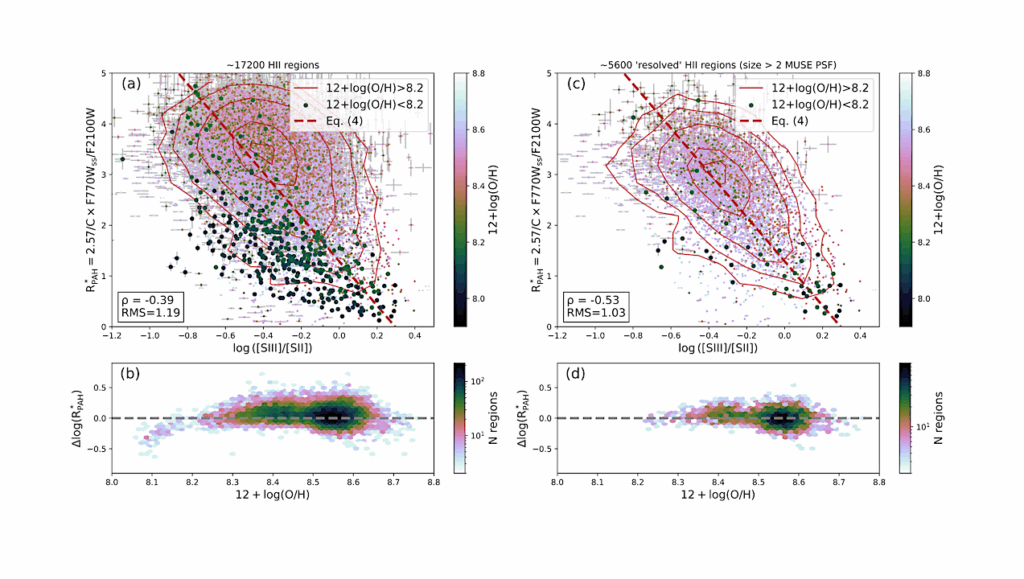A Long-period Planet Around GJ 1151 Measured With CARMENES And HARPS-N Data

Detecting a planetary companion in a short-period orbit through radio emission from the interaction with its host star is a new prospect in exoplanet science.
Recently, a tantalising signal was found close to the low-mass stellar system GJ 1151 using LOFAR observations. We studied spectroscopic time-series data of GJ 1151 in order to search for planetary companions, investigate possible signatures of stellar magnetic activity, and to find possible explanations for the radio signal.
We used the combined radial velocities measured from spectra acquired with the CARMENES, HARPS-N, and HPF instruments, extracted activity indices from those spectra in order to mitigate the impact of stellar magnetic activity on the data, and performed a detailed analysis of Gaia astrometry and all available photometric time series coming from the MEarth and ASAS-SN surveys.
We found a M>10.6 M⊕ companion to GJ 1151 in a 390d orbit at a separation of 0.57 au. Evidence for a second modulation is also present; this could be due to long-term magnetic variability or a second (substellar) companion. The star shows episodes of elevated magnetic activity, one of which could be linked to the observed LOFAR radio emission.
We show that it is highly unlikely that the detected GJ 1151 b, or any additional outer companion is the source of the detected signal. We cannot firmly rule out the suggested explanation of an undetected short-period planet that could be related to the radio emission, as we establish an upper limit of 1.2 M⊕ for the minimum mass.
J. Blanco-Pozo, M. Perger, M. Damasso, G. Anglada Escudé, I. Ribas, D. Baroch, J. A. Caballero, C. Cifuentes, S.V. Jeffers, M. Lafarga, A. Kaminski, S. Kaur, E. Nagel, V. Perdelwitz, M. Pérez-Torres, A. Sozzetti, D. Viganò, P. J. Amado, G. Andreuzzi, E. L. Brown, F. Del Sordo, S. Dreizler, D. Galadí-Enríquez, A. P. Hatzes, M. Kürster, A. F. Lanza, A. Melis, E. Molinari, D. Montes, M. Murgia, E. Pallé, L. Peña-Moñino, D. Perrodin, M. Pilia, E. Poretti, A. Quirrenbach, A. Reiners, A. Schweitzer, M. R. Zapatero Osorio, M. Zechmeister
Comments: 18 pages, 11 figures. Accepted version, A&A (2023)
Subjects: Earth and Planetary Astrophysics (astro-ph.EP)
Cite as: arXiv:2301.04442 [astro-ph.EP] (or arXiv:2301.04442v1 [astro-ph.EP] for this version)
Submission history
From: Jordi Blanco-Pozo
[v1] Wed, 11 Jan 2023 12:58:12 UTC (7,982 KB)
https://arxiv.org/abs/2301.04442
Astrobiology







